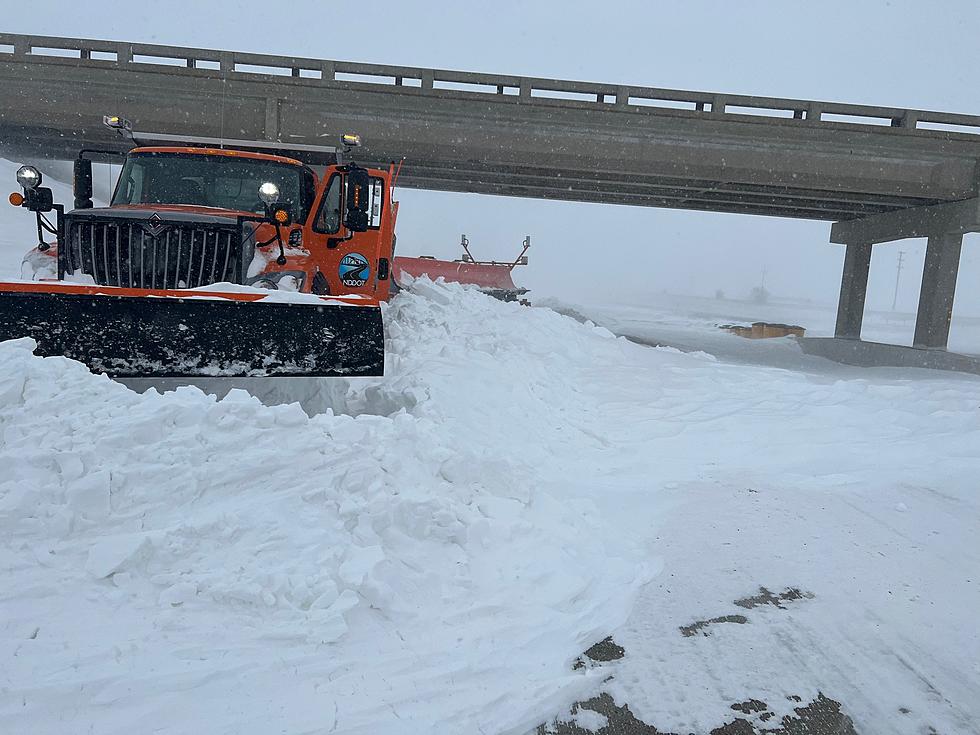
North Dakota Gets Dumped On: Check Out These Snow Totals
The winter storm/blizzard which began early on Tuesday morning and has lingered well into Friday has really left its mark on North Dakota.
Four solid days of stormy winter weather will have Bismarck Mandan and most of North Dakota digging out for days.
I can't say I've seen many times in my life where the entire state was in a no-travel advisory but that has been common for several days.
The North Dakota Department of Transportation has been working feverishly to make roads driveable again as the interstate and many other roads in the state have spent a lot of time closed over the last several days.
According to the National Weather Service in Bismarck, here are the snowfall totals from this storm: (Keep in mind most of these totals are as of 6 am Friday, December 16th)
Hannover, North Dakota 22 inches of snow.
Hazen, North Dakota 17.3 inches of snow.
Bismarck, North Dakota (airport) 19 inches of snow.
Mandan, North Dakota 20 inches of snow.
Glen Ullin, North Dakota 15.7 inches of snow.
Dickinson, North Dakota 12 inches of snow.
Steele, North Dakota 19 inches of snow.
Selfridge, North Dakota 21 inches of snow.
Turtle Lake, North Dakota 16 inches of snow.
Lisbon, North Dakota 28.4 inches of snow. (Lisbon gets the crown as dumped on the most)
Enderlin, North Dakota 24 inches of snow.
Wahpeton, North Dakota 11.2 inches of snow.
Fargo, North Dakota 11.1 inches of snow.
Grand Forks, North Dakota 17.3 inches of snow.
Harvey, North Dakota 20 inches of snow.
Williston, North Dakota 11.0 inches of snow.
Watford City, North Dakota 18 inches of snow.
You can bet most of these totals will add an inch or two after Friday's snow. Is it safe to say it's going to be a longgggg winter?
Spectacular Storm Photos From Bismarck Mandan Area
LOOK: The most expensive weather and climate disasters in recent decades
More From Cool 98.7 FM







